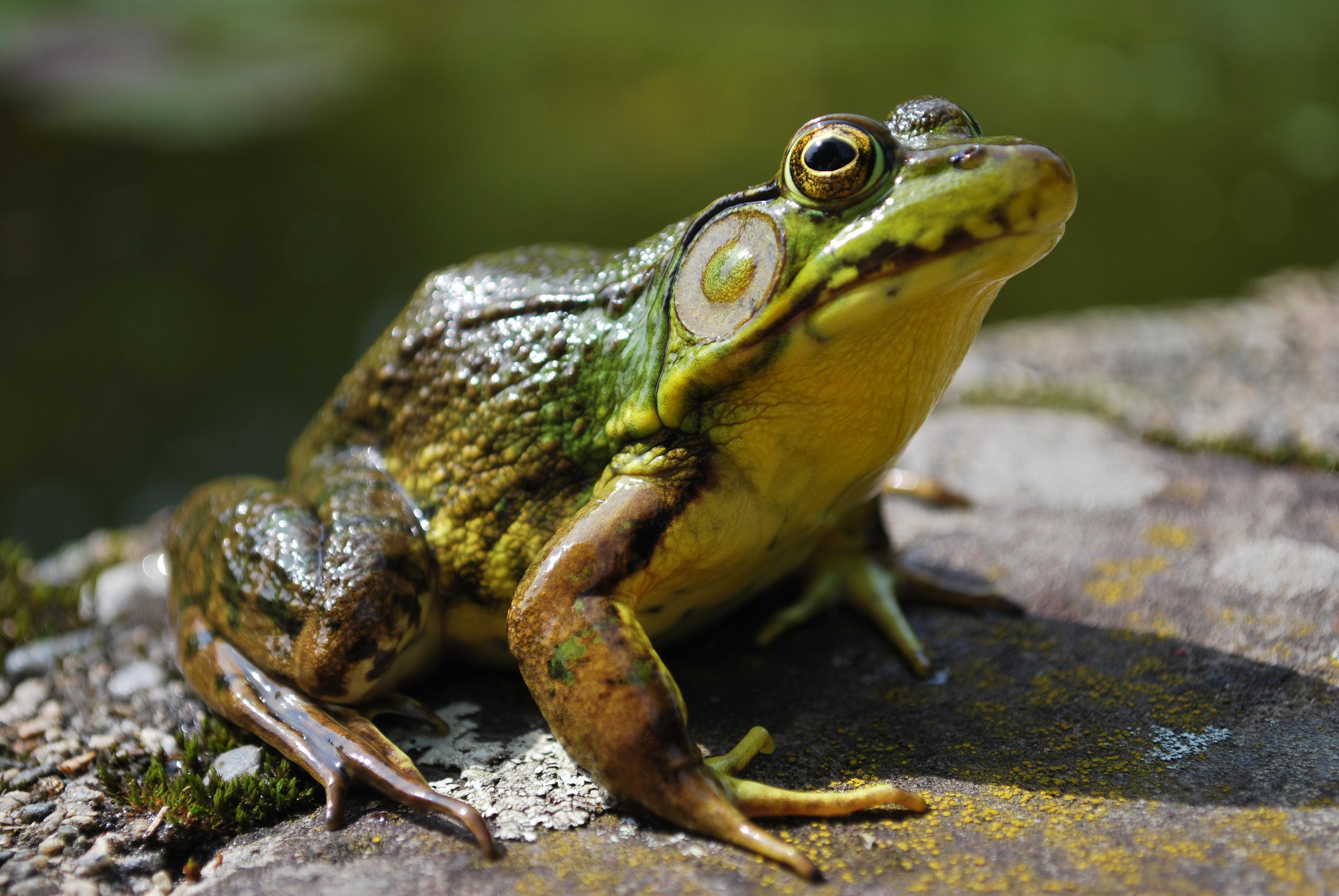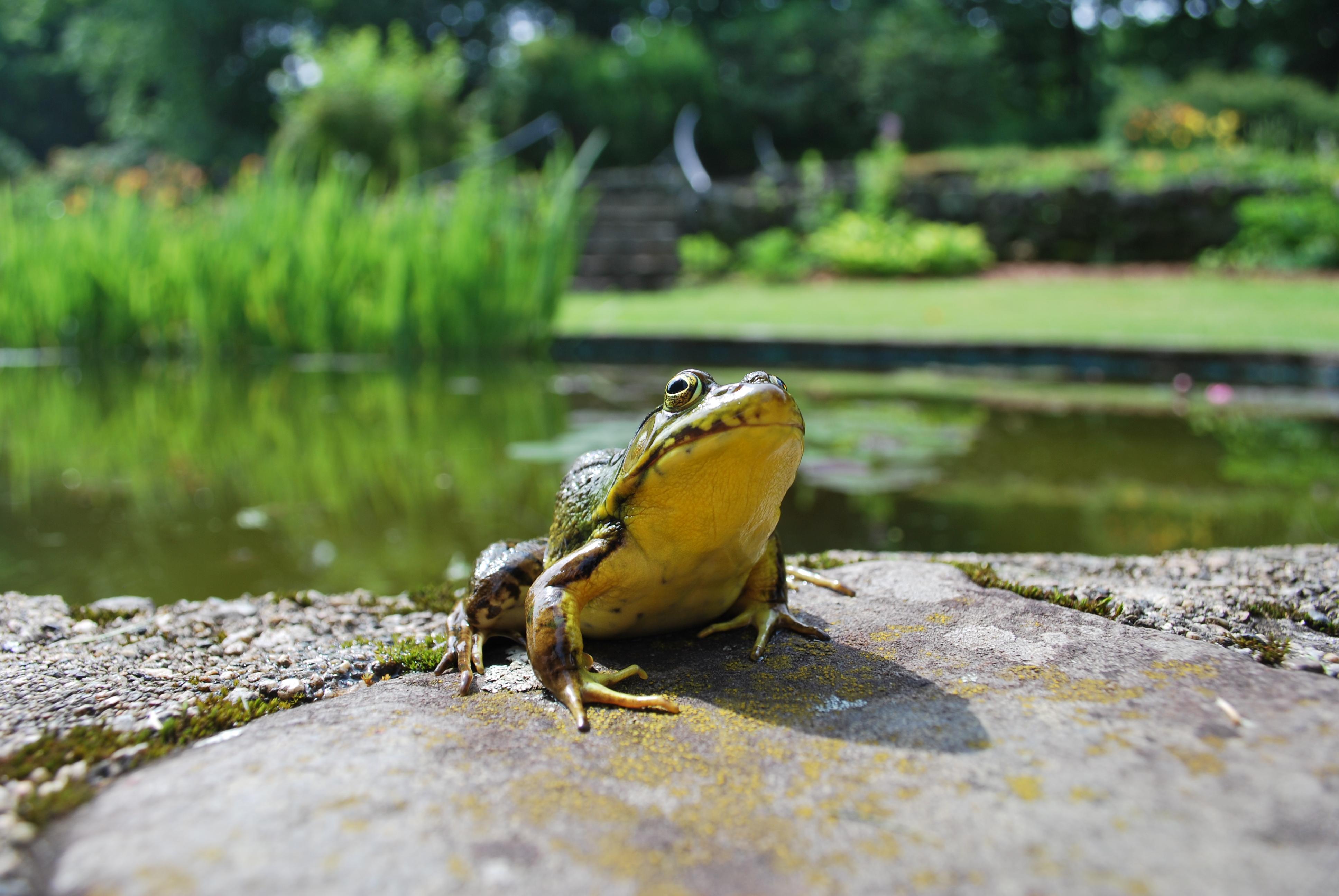- Tags:
- Something Wild,
- Wildlife

A bullfrog in the summer at The Rocks.
Something Wild is all about connecting with nature, especially in your own yard or nearby park or trail. Something Wild co-host Dave Anderson reflects on time spent sitting by the frog pond he created, tapping into the watery vibe. He shared the reflections below.
When the news and politics of the day are too intense, I visit a nearby sanctuary; a little water lily pool in the perennial flower garden, a small sacred space that I show and share with visitors to my home.
It's not a lavish pond — I made it. The thing is, it hosts a succession of frogs from late March to early October every year.
And well, who doesn’t like frogs?
It is a place for meditation on the chill amphibian lifestyle of breeding, laying eggs and laying low next to the water, at times soaking up the summer sun or hiding in the lily pads.
In spring, as soon as the ice melts, I install a bunch of sticks and branches across the surface of the tiny pond for the wood frogs and spotted salamanders. In April, it functions as a domesticated vernal pool. The sticks are adopted immediately by egg-laying females. The pond rings with the courtship chorus of male wood frogs and the shrill of peepers for a few brief weeks.
The spotted salamanders lay eggs and have an elaborate courtship ritual of their own, wafting pheromones and leaving packets of genetic material in a cluster across the dead leaves for females to pick up and then lay eggs.
In May tiny tadpoles sip air from the surface, rising and falling like so many champagne bubbles. By June, these green frog tadpoles metamorphose. They grow tiny legs and begin hiding in the lily pad leaves to avoid being eaten by the larger frogs in their natal pond.
Frogs are interactive; they croak and call even when I am present. Or they hold stock still and stare. They seem to be aware of me watching them and are less inclined to immediately leap into the water with their “eeek” alarm call. I notice they are more skittish around children who are inclined to try to net them or catch them with bare hands, a fine acquired skill.
Recently, a broad-wing hawk picked off a fat frog and ate it on a perch in a nearby maple tree, likely a traumatic day for the survivors who later seemed to converse about it while hiding under the protective rim of lily pads. One year, a heron stalked the pond.

How people interact with wildlife is changing. Something may be lost when kids no longer have the opportunity to catch frogs. Taking kids to just see or maybe try to catch a frog provides an opportunity to teach about nature and instill empathy for the plight of other creatures.
Sitting at the frog pool without kids is more of a zen experience, an outdoor aquarium experience. I tap into their froggy routine, sitting in the sun on a lily pad while they gauge my intentions.
When I leave the peaceful pool and walk away, the dominant green frogs vocalize, essentially saying “the coast is clear” or “and don’t come back!”
I reluctantly leave their watery-dreamy summer realm. There are likely worse things I could do with an hour of summer than commune with a bunch of “pet frogs” in the yard.
All too soon, their kingdom will fade, cool and freeze over for 6 months while the denizens sleep in the mud beneath the lily roots.
Something Wild is a partnership of NH Audubon, the Forest Society, and NHPR.
